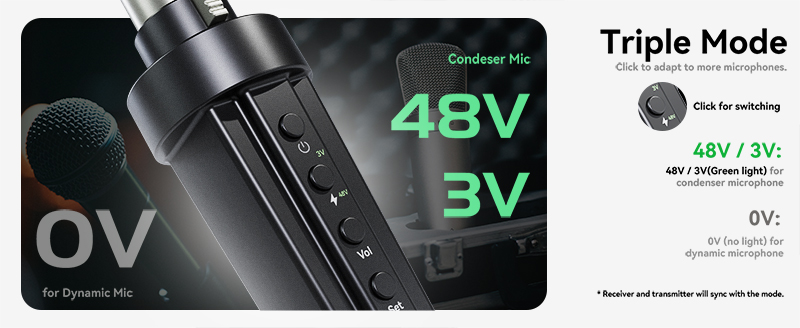What Wireless Microphone Frequencies Are Illegal
What Wireless Microphone Frequencies Are Illegal
What Wireless Microphone Frequencies Are Illegal

The legality of wireless microphone frequencies depends on your country’s regulations. Using the wrong frequencies can lead to fines, interference with critical services (like emergency communications), or confiscation of equipment. Below is a breakdown of illegal or restricted frequencies in key regions:
🇺🇸 United States (FCC Rules)
Illegal/Banned Frequencies:
600 MHz Band (614-698 MHz)
Banned since 2017 (Auctioned off to cellular providers like T-Mobile).
Affected models: Older wireless mics (e.g., Shure ULX-D, Sennheiser G3 in 600 MHz).
Exception: Licensed broadcasters can apply for limited use.
700 MHz Band (698-806 MHz)
Fully illegal (reserved for emergency services and LTE).
Airband & Military Frequencies
108-137 MHz (Aviation) – Illegal for wireless mics.
380-512 MHz (Public Safety) – Requires a license.
Legal Wireless Mic Frequencies (USA):
VHF (169-172 MHz, 174-216 MHz) – Less common, shorter range.
UHF (470-608 MHz, 614-698 MHz is gone) – Most professional systems use 470-608 MHz.
900 MHz (902-928 MHz) – Unlicensed but crowded (Wi-Fi, cordless phones).
2.4 GHz & 5 GHz (Wi-Fi bands) – Legal but prone to interference (e.g., Rode Wireless GO II, DJI Mic).
🇪🇺 European Union (ETSI Rules)
Illegal/Banned Frequencies:
700 MHz Band (694-790 MHz)
Banned since 2020 (Now used for 5G).
Affected models: Older Sennheiser G3/G4 in 700 MHz.
800 MHz Band (790-862 MHz)
Reserved for LTE/4G.
Legal Wireless Mic Frequencies (EU):
UHF 470-694 MHz (Main legal range for pro wireless mics).
1785-1800 MHz (DECT band) – Used by some digital systems.
2.4 GHz (Wi-Fi) – Legal but unreliable in crowded areas.
🇬🇧 United Kingdom (Ofcom Rules)
Illegal: 700 MHz (694-790 MHz), same as EU.
Legal: 470-694 MHz (shared with TV, requires license for large events).
🇨🇦 Canada (ISED Rules)
Illegal: 600 MHz (614-698 MHz), same as USA.
Legal: 470-608 MHz, 941-960 MHz (L-band), 2.4 GHz.
🇦🇺 Australia (ACMA Rules)
Illegal: 700 MHz (694-820 MHz).
Legal: 520-694 MHz (UHF), 1.8 GHz (DECT).
⚠️ How to Check if Your Mic is Illegal
Look at the frequency range on the mic/transmitter.
If it says 614-698 MHz (USA) or 694-790 MHz (EU), it’s likely banned.
Check manufacturer’s website (e.g., Shure, Sennheiser have compliance tools).
Use an online frequency checker
🔧 What to Do If You Own Illegal Wireless Mics
Stop using them immediately (risk of fines/interference).
Sell/trade-in for legal models (some manufacturers offer rebates).
Buy a legal system (e.g., Shure SLX-D, Sennheiser EW-D in legal bands).
✅ Best Legal Alternatives
| Country | Legal Frequencies | Recommended Systems |
|---|---|---|
| USA | 470-608 MHz, 900 MHz, 2.4 GHz | Shure SLX-D, Sennheiser EW-D |
| EU/UK | 470-694 MHz | Sennheiser EW-D, Sony UWP-D21 |
| Canada | 470-608 MHz, 1.9 GHz | Audio-Technica System 10 PRO |
| Australia | 520-694 MHz | Rode Wireless GO II (2.4 GHz) |
Final Advice:
Always check local regulations before buying. If in doubt, opt for digital 2.4 GHz or DECT systems since they’re license-free in most countries.
Need help finding a legal replacement for your specific model? Let me know!




